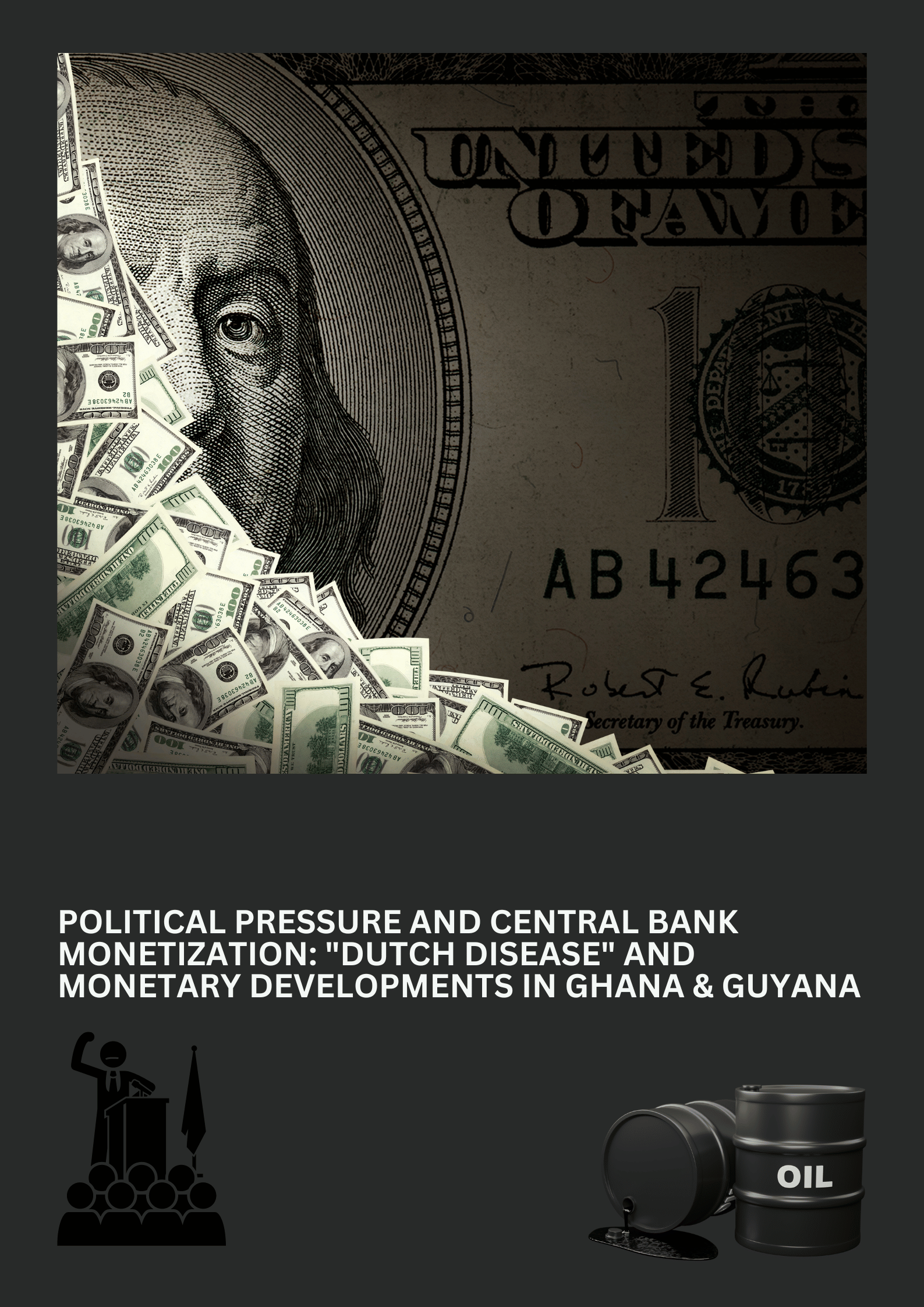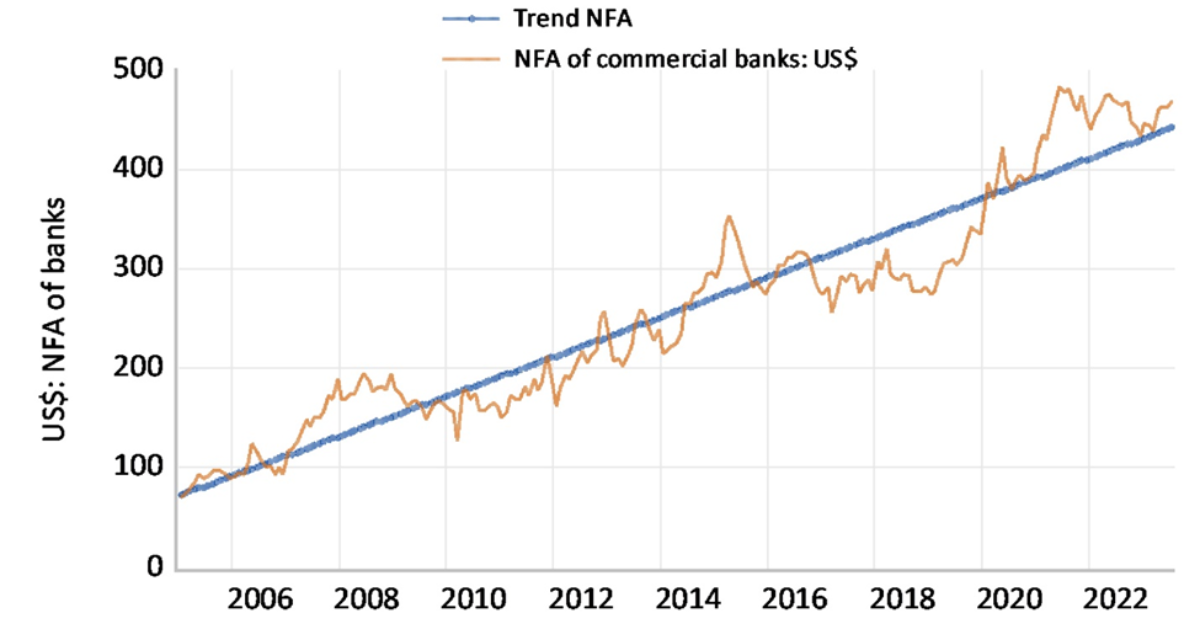By now many Guyanese are pondering the important concept known as the natural resource curse. Government ministers, high-paid government consultants and some news outlets have been talking about it since the discovery of high-quality crude oil in Guyana’s offshore waters. As early as 1995, the concept was first observed statistically by development economists and researchers in other social sciences. These researchers calculate that on average countries with abundant natural resources such as oil, natural gas, gold, diamonds, copper, etc., tend to have a lower long-term economic growth rate compared with those without said resources. In other words, a paradox of abundance. However, the Dutch disease, one manifestation of the resource curse, was first named by The Economist magazine in 1977 and formalized theoretically by two economists in 1982. We will discuss the Dutch disease in a later column.
The process of economic development is complex and there is no silver bullet that will get a nation over the minimum development threshold. Many factors have to come together and work in tandem to fully achieve the task. As a matter of fact, just focusing on one part of the task will not get the overall job done. For example, no matter how much leaders talk about small and micro enterprises, micro loans and village economies – all producing subsistence level productivity or just above – these alone will not generate the kind of favourable spill overs and learning by doing, which are necessary to drive the development process forward. I am yet to fathom how the village economies will function without one or more large-scale agro-industry on the coastal plain. Development policy, therefore, at minimum, involves solving a massive and complex coordination problem.
Exactly what do we mean by development? Now, this is not an easy concept to define and its meaning has been actively debated. Some people would say a society should focus on Gross National Happiness as in Bhutan (however, that country is now focusing on incorporating happiness into traditional GDP), environmental sustainability or equitable distribution. These are all valid points and no doubt economists and other social scientists are busy trying to develop indices to measure them and incorporate happiness, gender equity, fairness, social mobility, etc., into the work in progress that is Gross National Product. The mathematics is often not simple and people have dedicated their lives towards understanding them.
For our purpose in these columns, we will use the United Nations Development Program’s (UNDP’s) measurement of human development as prescribed by the Human Development Index (HDI). The development of the HDI was coordinated by Pakistani economist Mahbub ul Haq who brought together several renowned development economists of the time (Paul Streeten, Amartya Sen, Gustav Ranis and others) to create a measurement of development that considers human capabilities – that is, development must enhance the capacity of humans to pursue goals and allow them to live freely. Therefore, the HDI combines a narrow set variables: average income, life expectancy and education attainment. Another form of the HDI corrects for income inequality. At minimum, therefore, I hope we can agree that average income of the country, how long one is expected to live, and education all contribute to the enhancement of human capacity and freedom.
While the natural resource curse tends to hold for most resource-rich countries, there are several noticeable escapees if we use the HDI as the benchmark of development. Therefore, the resource curse ought not to be inevitable. It would be better for us to think about natural resource abundance as a double-edged sword of both dangers and favourable possibilities. There are, however, many more conspicuous success stories among countries with very little natural resources.
First, let us observe countries that have done quite well in terms of human development in spite of the large reserves of crude oil and natural gas. Norway has escaped the curse in the most spectacular fashion by topping the list of 188 countries as given by the HDI. This means that Norway has a higher level of human development compared with United States, United Kingdom and Canada. Norway should be a case study for the social scientists at University of Guyana. My hunch is the meritocracy of the civil service and the capacity of government were crucial factors in Norway’s development. Norway’s rise has little to do with a free market. We know in Guyana that Party Paramountcy of the late 1970s and up to 1985 has completely destroyed the civil service and its capacity to implement development policies. These days the list system, enshrined in the Guyanese constitution, provides the incentive for a leader or group of leaders to capture the civil service and the economic privileges this brings after consolidating power in the political party. More on this later in the series.
Like Norway, Saudi Arabia is also in the category of very high human development. The country escapes the curse by being ranked at 38 from the top. However, those looking at gender equity would question Saudi Arabia’s ranking. They would have a point, I believe. The United Arab Emirates and Kuwait, all with large oil reserves, also circumvent the trap and are ranked in the class of very high human development.
In the category of high human development, as opposed to very high, there is Trinidad and Tobago which is ranked at 65 places from the top. Botswana, which builds on its diamond resources and is in the unfavourable position of being land-locked, evades the curse compared with its more resource-abundant neighbours that have sea ports. Botswana is ranked second in the list of countries with medium human development. Guyana is more at the bottom of the list of medium human development.
On the opposite end are those small economies with little natural resources that have managed to make it in the list of very high and high human development. In the category of very high human development we have small economies such as Ireland, New Zealand, Malta, Israel, Singapore, Denmark and many more. They all present interesting case studies, particularly Singapore since there is a lot of misunderstanding in Guyana what were the crucial factors in Singapore’s impressive rise. Along with the smart industrial policies of Lee Kuan Yew and his relatively mild authoritarianism, that country benefitted from favourable geographic location, time zone and history as a trading intermediary. Singapore’s civil service is considered a meritocracy and is praised for its high competence. Of course, the United States opened its market to Singapore, South Korea and Taiwan during the Cold War, thus enabling them to pursue industrial policies that created the learning by doing and favourable spill overs. Guyana was excluded from this privilege. Again, this thing call a free market was not as pivotal as some books and Lee Kuan Yew himself might make it appear.
In the high human development category are our own CARICOM sisters Barbados, The Bahamas, Antigua and Barbuda, Belize and St Kitts and Nevis. Mauritius and Fiji are also in this category. Fiji and Trinidad and Tobago are bi-communal societies just like Guyana and have their share of ethnic rivalry.
In the coming essay, we would explore what forms the resource curse may take. Afterward, we would address the question posed by the title.
Comments: tkhemraj@ncf.edu









